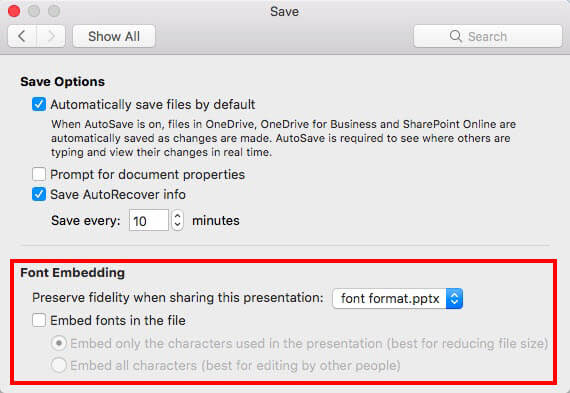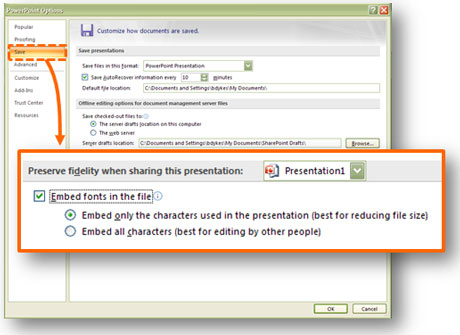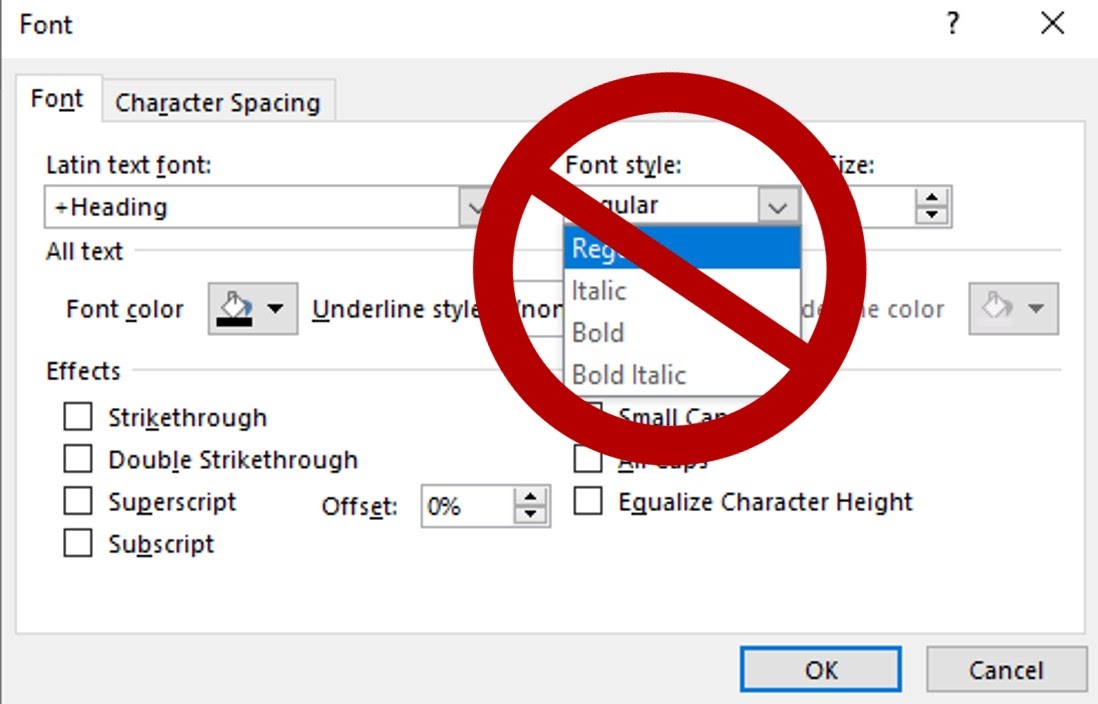Ever wonder why when you send your perfectly formatted presentation to customers, the text sometimes appears big and ugly on their screens? Or worse, how does your beautiful presentation turn out all wrong on a conference PC, leading you to a last-minute scramble to reformat every slide?
Well, these deep cosmic mysteries are caused by fonts: there are quite a few different ways fonts can cause chaos, and in this article we’ll walk you through the different quagmires and how to avoid them.
To Embed or Not to Embed?
Before getting into this legendary question, let’s explain what exactly embedding means. Embedding fonts is the inclusion of the font file in a document. Not just using the font in the document with the font file installed on your computer, but attaching the font file into the PowerPoint file itself. This is a subtle yet crucial difference.
The biggest problem is when presentations with embedded fonts travel between Mac and PC. This often doesn’t work, and you may not get any warning from PowerPoint that it’s not working.
There is not one single solution to this quandary. We’ve put together some simple rules to help you navigate it:
- For Mac users in general, don’t embed fonts. This rule applies to Mac-to-Mac, Mac-to-PC, or even PC-to-Mac.
- For PC users sending to PC users, embed fonts, but still send the font files with your presentation so the recipient can install them in the (very much still possible) case that the embedded fonts are not displaying correctly.
If you install fonts on a computer, be ready to restart PowerPoint, and potentially all other Office applications and the computer itself to make sure caches are refreshed and the font file is loaded up.
Mac-to-PC solution
“Don’t embed. Just provide”. These are the immortal words of Aislinn Barry, Production Director at SketchDeck. Aislinn regularly assists clients with this issue and has become an expert at troubleshooting PowerPoint font issues. Those four words have become her mantra when moving presentations and template designs from Mac to PC, or even staying within the Mac universe.
Aislinn notes that font names can be an issue between Mac and PC. The names can be different for the same font! Plus, compatibility errors do not show on the Mac side. PCs generally show an error message and let you know the font is missing, but Macs do not show this error, unfortunately. Her tip to Mac users is to always check on your Preferences and confirm that Embed Fonts is unchecked, then send through the font packages with any presentation or template.

As a best practice, when Aislinn delivers graphic design work to clients, she includes a font help guide as well, and packages up the font files needed in the format their computer requires.
PC-to-PC solution
When working within the PC world, embedding does become a recommended and convenient option. If you are a PC user, sending files in PowerPoint to other PC users, this is when embedding your fonts is a natural step to help avoid issues caused by missing fonts and wrong font versions. Office Support provides some easy to follow instructions on embedding and confirming the fonts used in your presentation. Aislinn advises to still provide font files with the presentation as a failsafe.

Another tip from Aislinn is to be wary of the “Font style” options in PowerPoint. For some fonts, this can cause problems down the line because different versions of the same font can use the Font style control differently. Aislinn has seen fonts that use different font files to provide boldness, and some that use “Font style” to control boldness. This is unfortunately straight up confusing, and you’ll need to experiment with some trial-and-error to figure out if your fonts are causing this sort of pandaemonium.

For a user-friendly solution option, Aislinn recommends setting the theme fonts on new templates. Themes can help eliminate end-user questions on font choices and style needs. Theme fonts are a unique feature to PCs and are not available to Mac users. Establishing the theme fonts for presentations and templates helps ensure consistency of your presentation’s appearance and eliminates additional formatting needs and questions by users.
Font management software can help a lot
If you are working across multiple brands, each with their own custom fonts to keep straight, you may want to consider using font management software: Aislinn’s favorite is Suitcase Fusion. There are many font management software programs available for PCs and Macs. Font management tools organize your font library into convenient folders with searchable tags and can create an easier way to activate and deactivate your fonts.
Best practices
Phew! That was a lot of font information! As simple as we want to make it, there are a lot of different font files and software versions out there and they’ve not made our lives easy. To try to navigate through this, here are our suggested best practices. This might be too much for a casual design project, but at least you know what to do if the font-gremlins are causing you chaos.
When starting a new presentation or template project with your designer, talk through all the usage situations, and end-users for the new document. Having a shared understanding of the functional needs of the presentation helps your designer in selecting the best types of fonts and licenses for your applications.
As Aislinn does with SketchDeck clients, request font instructions for any PowerPoint presentation or template from your designer. In turn, be sure to provide similar usage guidelines to all end-users. You want to make sure your presentation accurately reflects your brand standards everywhere it’s seen.
Always try to have the font files ready in case something goes wrong, even if you’re embedding fonts when sending PC to PC. Plan in advance to review the presentation on the receiving computer and install the fonts if needed. If you install fonts, you might need to restart any and everything – Office applications, the operating system, font management software.
Your ultimate PowerPoint project checklist for zero font issues:
- Align with designers on how the presentation will be used, on what systems, and by whom
- Get usages instructions from your designer
- Relay usage instructions to other end-users
- Send fonts, do not embed, when moving between Macs and PCs
- Do embed when moving within PC versions: but also send the font files
- Plan to check the document prior to presenting whenever a new computer is used
- Keep font files handy for easy access when needed, potentially with a font management software if managing across a number of brands or different looks
While this can all seem like a strange new language and process at first, merely doing a quick Settings check and getting comfortable with loading fonts can actually simplify your PowerPoint life. Getting in the habit of checking the embedded font status, and having font files available with all presentations can help you overcome your PowerPoint font frustrations. And have the added benefit of helping ensure your presentations and templates always reflect your brand as intended.
